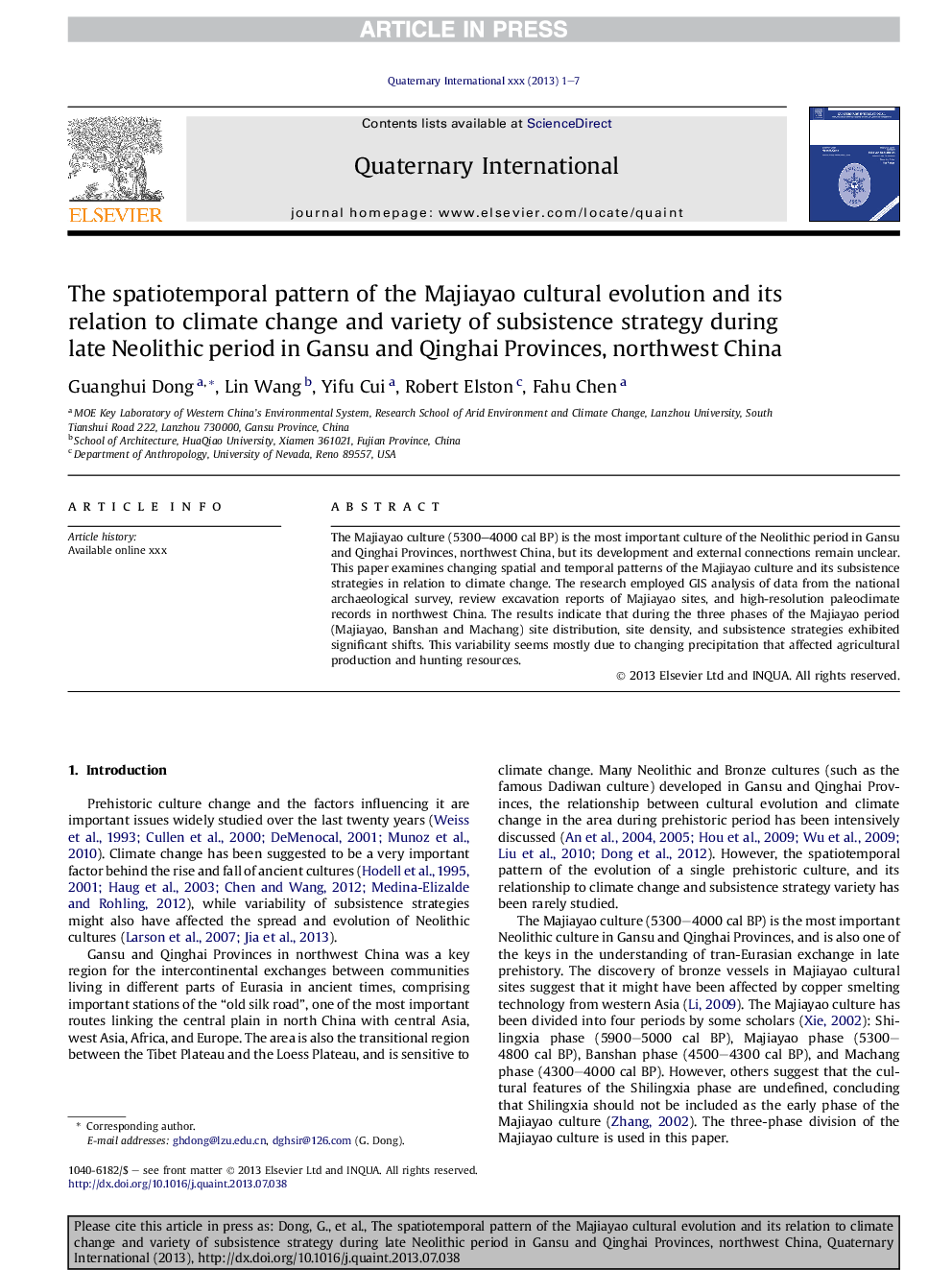| Article ID | Journal | Published Year | Pages | File Type |
|---|---|---|---|---|
| 7452561 | Quaternary International | 2013 | 7 Pages |
Abstract
The Majiayao culture (5300-4000 cal BP) is the most important culture of the Neolithic period in Gansu and Qinghai Provinces, northwest China, but its development and external connections remain unclear. This paper examines changing spatial and temporal patterns of the Majiayao culture and its subsistence strategies in relation to climate change. The research employed GIS analysis of data from the national archaeological survey, review excavation reports of Majiayao sites, and high-resolution paleoclimate records in northwest China. The results indicate that during the three phases of the Majiayao period (Majiayao, Banshan and Machang) site distribution, site density, and subsistence strategies exhibited significant shifts. This variability seems mostly due to changing precipitation that affected agricultural production and hunting resources.
Related Topics
Physical Sciences and Engineering
Earth and Planetary Sciences
Geology
Authors
Guanghui Dong, Lin Wang, Yifu Cui, Robert Elston, Fahu Chen,
